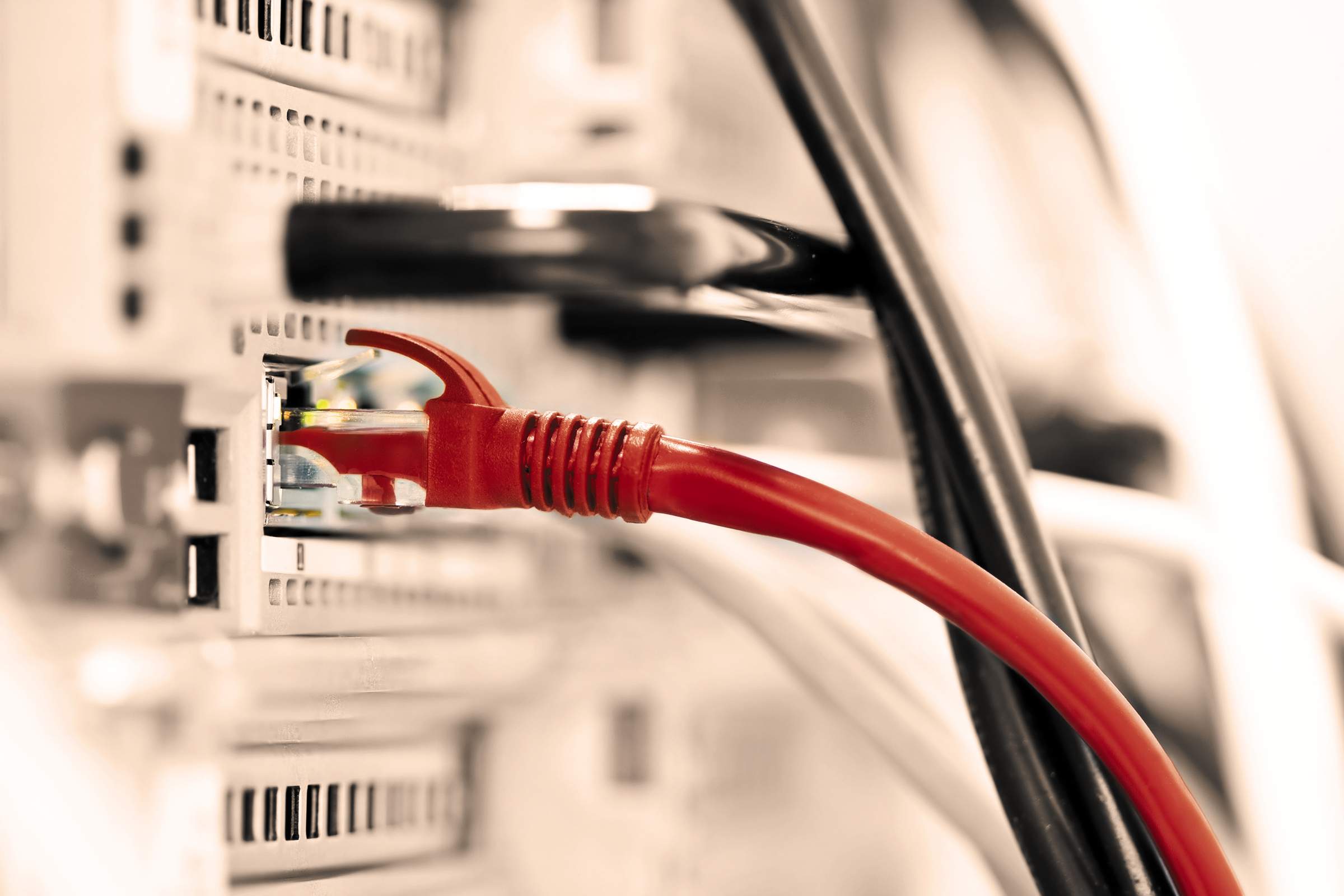Generic Ethernet Access in Internet Leased Line Solutions
-
April 23, 2024
-
7 min read

Generic ethernet access (GEA) is an innovative technology designed to bridge the gap between high-speed broadband and internet leased line (ILL) services.
With the rise of digital transformation, businesses now demand more flexible, reliable, and cost-effective internet solutions, making GEA increasingly popular. GEA is transforming how businesses access dedicated internet by offering a perfect blend of flexibility, reliability, and cost-effectiveness.
By leveraging existing broadband infrastructure, it delivers dedicated internet access with enhanced quality of service and performance. This makes it an ideal solution for businesses seeking robust connectivity without the extensive costs typically associated with traditional dedicated leased lines.
This blog will cover the benefits, implementation strategies, and real-world applications of GEA, providing insights into why it’s becoming the go-to choice for dedicated internet for businesses across various sectors.
Benefits of GEA in internet leased line services
The integration of generic ethernet access into dedicated internet line services signals a paradigm shift in how businesses approach their connectivity needs. It presents a suite of advantages that cater to the modern enterprise’s demand for efficiency, reliability, and scalability.
- Cost efficiency: A standout benefit of GEA is its ability to significantly curb infrastructure expenditures. By leveraging the existing broadband framework, businesses can access dedicated internet services without the hefty price tag traditionally associated with ILL solutions.
- Reliability: In the digital age, the cost of downtime can be astronomical. In a recent study, 44% of firms indicated that hourly downtime costs exceed $1 million to over $5 million, exclusive of any legal fees, fines or penalties.
Despite its cost-efficiency, GEA stands out for its unwavering reliability. It assures businesses of consistent, uninterrupted connectivity — a non-negotiable requirement for operations heavily reliant on stable internet access. This reliability ensures that businesses can maintain their productivity and service levels, avoiding the financial and reputational damage associated with connectivity disruptions.
- Scalability: Flexibility in scaling operations up or down based on current needs is a critical concern for businesses in today’s fast-paced market environment. GEA addresses this need admirably by offering scalable services that grow in tandem with business requirements.
This means that as a business expands or experiences fluctuating demand, GEA services can adjust accordingly, providing increased bandwidth without necessitating a complete overhaul of the existing network infrastructure. This scalability is particularly beneficial for businesses in growth phases or those with seasonal fluctuations in demand.
- Simplicity: The implementation of GEA is characterised by its simplicity and ease. Unlike the complex and often lengthy process associated with setting up traditional ILL solutions, GEA enables a smoother transition to dedicated internet access by utilising the already established business broadband infrastructure.
This straightforward approach not only speeds up the deployment process but also minimises the potential for disruption to business operations, allowing companies to enjoy enhanced connectivity with minimal fuss.
Implementation of GEA in ILL services
Here’s a deeper dive into the step-by-step process involved in integrating GEA into ILL services, ensuring businesses can harness the full potential of this technology:
- Initial assessment and planning: The first step in implementing GEA involves a comprehensive evaluation of the current network setup. This assessment aims to understand the existing infrastructure’s capabilities and limitations, providing a clear picture of what needs to be adapted or upgraded.
During this phase, businesses, alongside their service providers, will outline their specific needs, including required bandwidth, performance expectations, and any particular reliability standards that must be met.
- Designing the optimal GEA configuration: With a thorough understanding of the business’s requirements and the existing network infrastructure, the next step involves designing an optimal GEA configuration. This design process takes into account the specific bandwidth needs and reliability expectations, crafting a GEA solution that aligns with the business’s operational demands.
Factors such as the geographical location of business sites, the type of data being transmitted, and anticipated growth projections are all considered to ensure the GEA service is both robust and scalable.
- Integration with existing IT infrastructure: A crucial aspect of GEA implementation is ensuring that the new service seamlessly integrates with the company’s existing IT infrastructure. This involves configuring routers, switches, and other network devices to work efficiently with the GEA service.
The integration process also includes setting up secure VPN connections if remote access is required, ensuring that data transmission remains secure across the GEA network.
- Testing and optimisation: Before the GEA service goes live, rigorous testing is conducted to ensure the configuration meets the established performance and reliability criteria. This testing phase helps identify any potential issues that could affect service quality, allowing for adjustments and optimisations to be made.
It’s an iterative process where feedback loops between the business and the service provider help fine-tune the system for optimal performance.
- Ongoing support and maintenance: After the successful deployment of the GEA service, businesses benefit from ongoing support and maintenance from their service provider. This support ensures that the dedicated internet access remains reliable and any issues are promptly addressed.
Additionally, as the business grows or its needs change, the GEA configuration can be adjusted to accommodate new requirements, ensuring the service continues to meet the company’s evolving needs.
By adhering to this structured approach, businesses can effectively implement GEA in their Internet Leased Line services, unlocking the advantages of dedicated Internet with minimal disruption and investment.
Real-world applications of GEA in ILL services
GEA finds its application in various sectors, demonstrating its versatility and effectiveness:
- SMEs: Small and medium enterprises benefit from GEA’s cost-effective, reliable internet access, supporting everything from cloud services to VoIP communications.
- Financial Institutions: For banks and financial services, GEA provides the secure, uninterrupted connectivity needed for real-time transactions and data processing.
- Educational Institutions: Schools and universities use GEA to support digital learning platforms, ensuring students and faculty have consistent access to online resources.
Future outlook and trends in GEA and ILL services
With the digital economy accounting for over 60% of the global GDP, the demand for reliable, high-speed internet connectivity is at an all-time high.
This surge shows the critical role of GEA and ILL services in the modern business ecosystem, with several key trends and developments shaping their future:
Increased adoption
The recognition of GEA’s value proposition—combining cost efficiency with high reliability—is driving its increased adoption among businesses of all sizes. This trend is anticipated to accelerate as companies seek flexible, scalable solutions to support their growing digital needs.
Technological advancements
Innovations in fibre optics, network hardware, and software-defined networking (SDN) are expected to substantially boost the performance, reliability, and overall efficiency of GEA and ILL services. These technological strides will enable businesses to enjoy higher data transfer speeds and more robust connectivity solutions.
Integration with emerging technologies
With the advent and proliferation of Internet of Things (IoT) devices and the rollout of 5G networks, the need for dependable, high-capacity internet connectivity has never been greater.
GEA is set to play a crucial role in this context, offering the necessary infrastructure backbone to support the seamless operation of IoT applications and the high-speed, low-latency requirements of 5G technology.
Conclusion
The future outlook for GEA and ILL services is marked by exciting opportunities and challenges. As these services continue to evolve, they will undoubtedly play a pivotal role in enabling businesses to navigate the complexities of the digital landscape. By staying abreast of these trends and leveraging the latest advancements, businesses can ensure they are well-equipped to meet the demands of the future head-on.
With providers like Airtel providing dedicated internet leased line services, businesses have a strong ally in their quest for superior connectivity solutions that drive growth and success in the digital age.
 Share
Share









